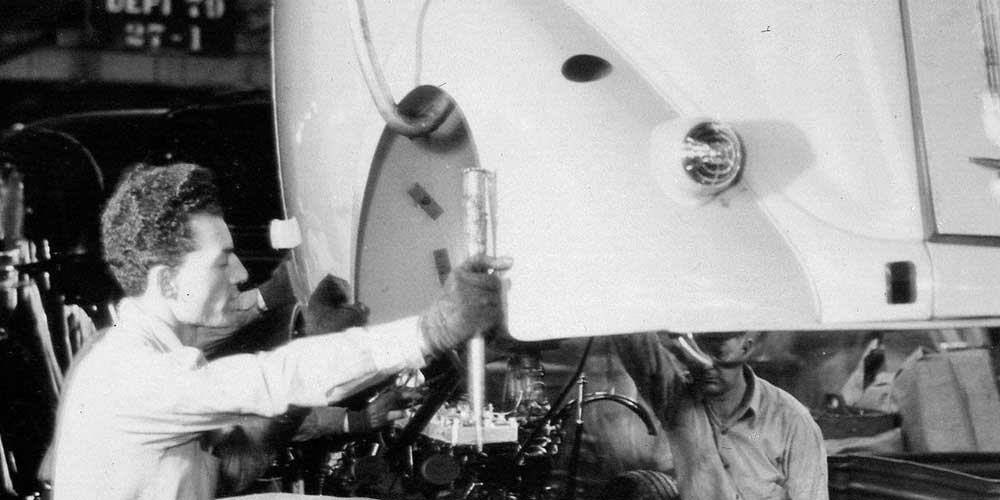By Robert Tate, Automotive Historian and Researcher
Images Courtesy of the Chrysler Archives and Marc Rozman
Published 7.17.2019
This is a story about Jack Smith, one of the individuals behind the Plymouth Road Runner for Chrysler during the 1960s and early 1970s.
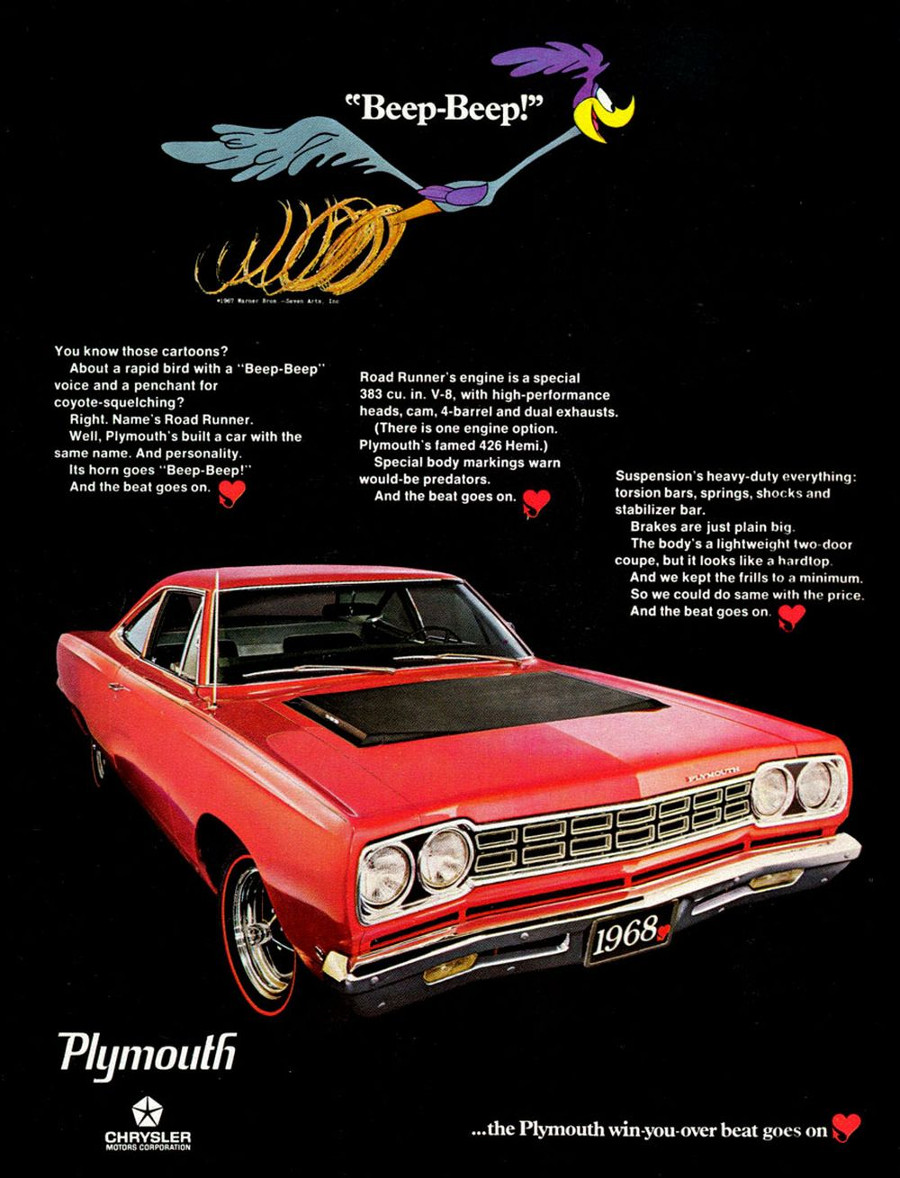 1968 Plymouth Road Runner ad (Chrysler Archives)
1968 Plymouth Road Runner ad (Chrysler Archives)
I had the pleasure of meeting Smith at the Chrysler Museum a number of years ago. He was a perfect gentleman and very charismatic; he knew the history of Chrysler, along with the Road Runner and Plymouth story.
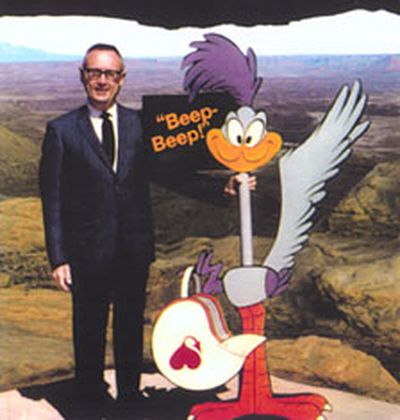 Jack Smith standing next to Warner Bros Road Runner character
Jack Smith standing next to Warner Bros Road Runner character
Smith was involved with one of the most successful campaigns in automotive history. During the 1960s, the culture was changing, and the auto companies were beginning to offer muscle cars with more horsepower and styling features to attract a much younger audience. This resulted in higher profits for the companies.
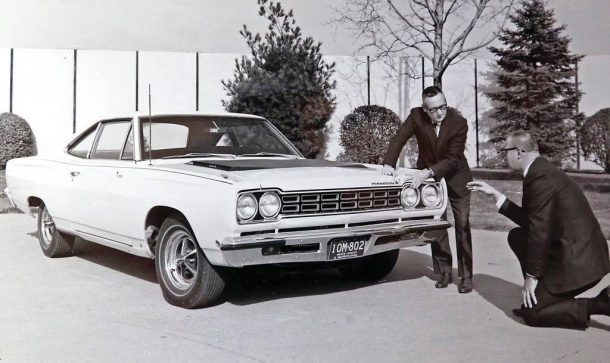 Jack Smith discussing the front end of the Plymouth Road Runner with Chrysler EVP Dick MacAdam
Jack Smith discussing the front end of the Plymouth Road Runner with Chrysler EVP Dick MacAdam
Chrysler in the 1960s was in direct competition with General Motors and Ford muscle cars. General Motors, Ford and AMC recognized the muscle car culture, represented by successful vehicles like the Pontiac GTO, Ford’s Shelby Cobra GT or AMC’s AMX. Chrysler needed to rebrand some of their cars, and Smith was the person who did that.
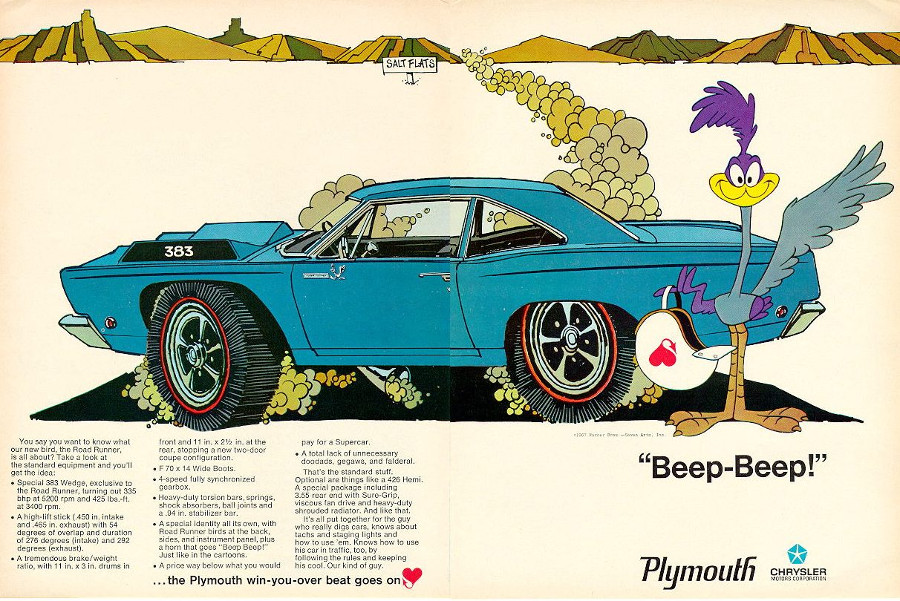 Plymouth Road Runner ad (Chrysler Archives)
Plymouth Road Runner ad (Chrysler Archives)
Smith, who previously worked with Studebaker as a mechanical engineer, started at Chrysler in 1957 and became the manager for the mid-sized Plymouth product planning group during the early 1960s. He said his first assignment was to come up with a name to compete with the popular Pontiac GTO. The Plymouth Road Runner was introduced to the public in 1968. Weighing 3,400 pounds and priced at $3,032, the Road Runner was a high-performance car named for the famed Warner Brothers animated cartoon bird. In the beginning, the Road Runner branding idea almost did not take off because some Chrysler executives were not sold on it.
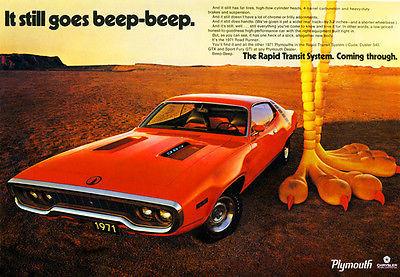 1971 Plymouth Road Runner ad (Chrysler Archives)
1971 Plymouth Road Runner ad (Chrysler Archives)
It was Gordon Cherry who came up with the idea of using the Road Runner cartoon bird with Plymouth car. Cherry got the idea from watching the cartoon character on Saturday mornings with his kids. Bob Anderson, executive vice president of sales and marketing for Chrysler and Plymouth, wanted a car that would appeal to younger drivers, and most importantly, compete with the popular Ford Mustang. Cherry had explained his idea to Smith, who immediately came up with a presentation and proposal to use the animated Road Runner to represent the mid-size Plymouth. Chrysler leadership approved the idea, and Smith secured the rights to use the Road Runner character from Warner Brothers for $50,000. Another $10,000 was spent to create the iconic Plymouth car horn that goes “Beep Beep.”
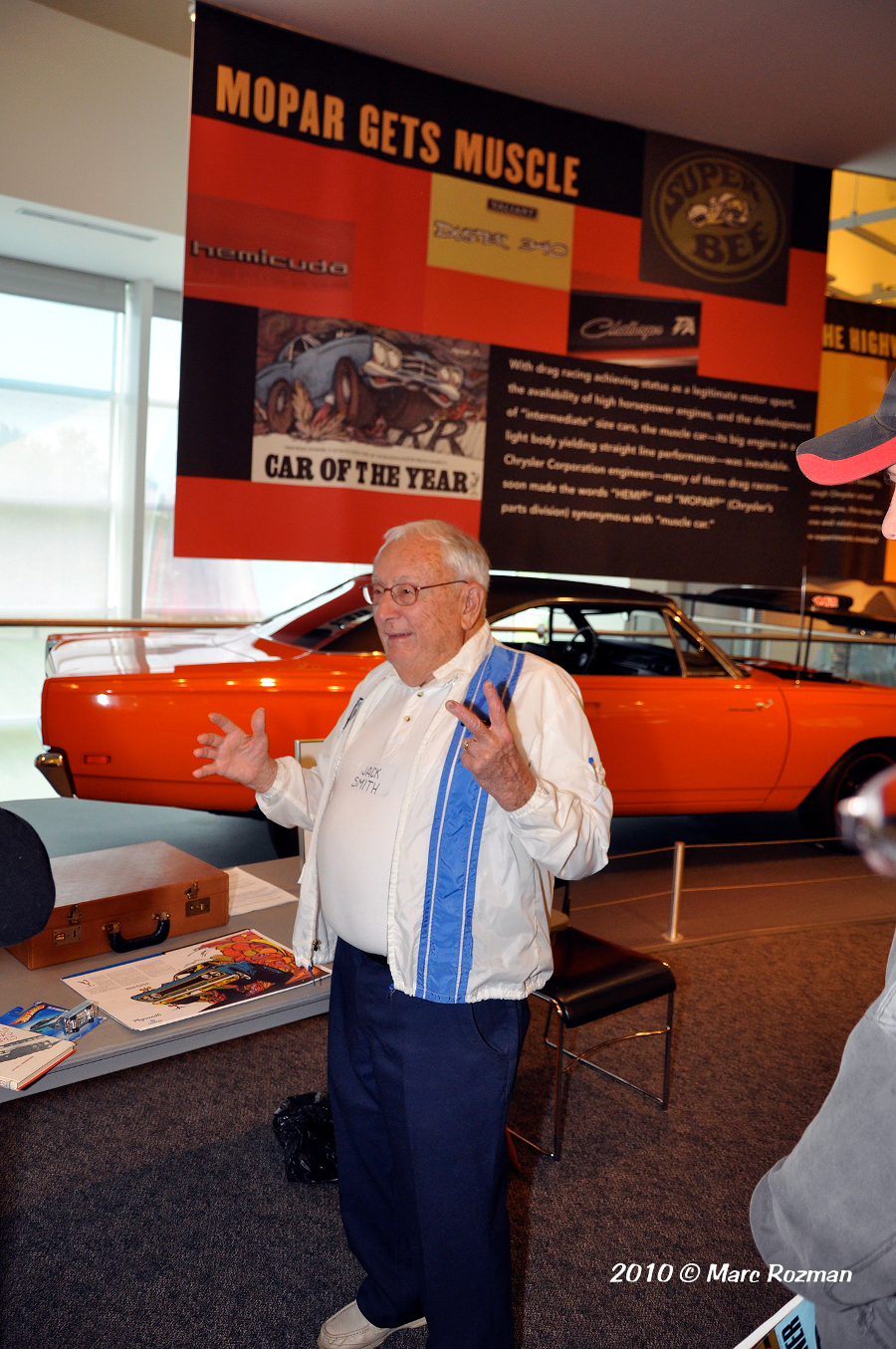 Jack Smith at the Walter Chrysler Museum on September 18 2010 (Photo by Marc Rozman)
Jack Smith at the Walter Chrysler Museum on September 18 2010 (Photo by Marc Rozman)
In 1968, Plymouth sold around 40,000 Road Runner models in its first year, which was great news for Chrysler. From 1969 to 1972, the Plymouth Road Runner continued to post strong sales.
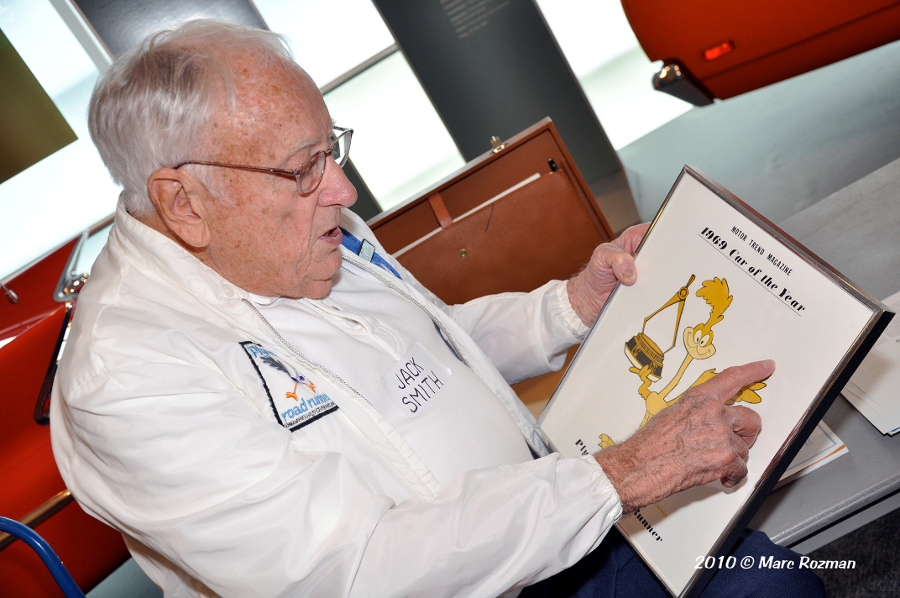 Jack Smith at the Walter Chrysler Museum September 18 2010 (Photo by Marc Rozman)
Jack Smith at the Walter Chrysler Museum September 18 2010 (Photo by Marc Rozman)
In conclusion, the standard Plymouth Road Runner included an illustration of the popular animated character. An upgraded model offered a special hood treatment including a two-foot long side-facing integral hood scoops. When buyers selected a Road Runner with a Hemi engine, the word “Hemi” appeared on the scoops and the rear of the car as well. Consumers enjoyed the styling, along with the universally loved Road Runner animated character.
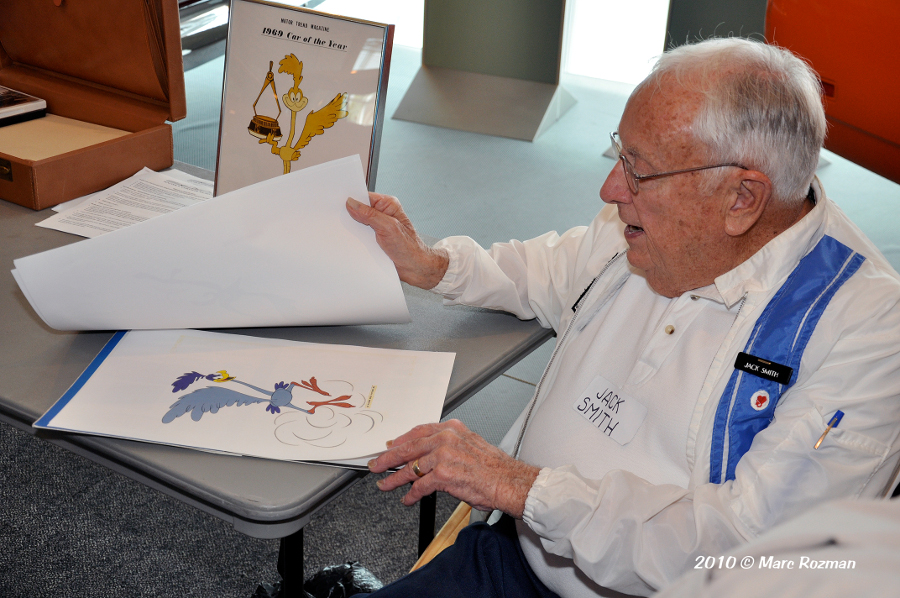 Jack Smith tells the Road Runner story at the Chrysler Museum September 18 2010 (Photo by Marc Rozman)
Jack Smith tells the Road Runner story at the Chrysler Museum September 18 2010 (Photo by Marc Rozman)
Smith passed away at the age of 94 in 2017, and his great legacy will always be a part of our automotive history and culture.
Bibliography
Frumkin, MJ. “Classic Muscle car Advertising the Art of Selling Horsepower.” Krause Publications, 2002.
Butler, Don. “The Plymouth and DeSoto Story.” Crestline Publishing, 1978.
Cruz, Francisco. “Father of the Plymouth Road Runner Passes Away at Age 94.” Fiat Chrysler Authority, October 13, 2017.


